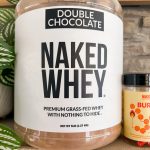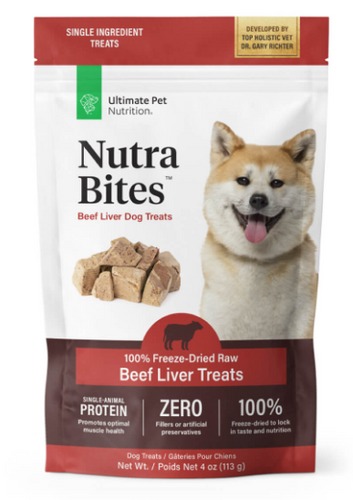This is a sponsored guest post.
Healthy smoothie recipes are the unsung heroes of nutrition.
Their power lies in their simplicity and versatility, offering a tasty way to pack essential nutrients into your diet.
Whether you’re looking for an immunity boost, post-workout replenishment, or just to revolutionize your health journey – healthy smoothie recipes are the way to go.
Dive deeper with us as we explore how healthy smoothie recipes, packed with fruits, vegetables, and other nutrient-dense ingredients can revolutionize your health journey.
The Importance of Nutrition for Kids and Adults
Providing more than just energy and strong bones, a balanced diet is essential to ensuring optimal cognitive function, immune system health, and overall well-being.
Multivitamins: The Common Go-to Supplement Choice
In today’s fast-paced society, where time constraints often dictate meal choices, over 40% of Americans supplement their kids’ diets with multivitamins, according to research published by JAMA Network Open. However, this approach may fall short as many multivitamin brands on the market are laden with sugars or artificial ingredients.
Unveiling the Drawbacks of Most Kids’ Multivitamins
In our pursuit to fortify children’s nutrition, we often turn to multivitamins. However, it is critical that parents understand not all kids’ vitamins deliver as promised. Many on the market today have several pitfalls which can be detrimental rather than beneficial for your child’s health.
The Imbalance in Nutrient Content
A well-rounded diet delivers a wide range of nutrients working synergistically within our bodies – an equilibrium challenging to replicate with supplements alone.
Regrettably, most kids’ vitamins fall short by focusing solely on specific nutrients while overlooking others like fiber or healthy fats. Research suggests consuming isolated nutrients without other essential micronutrients could even disrupt absorption rates leading to deficiencies despite supplementation efforts.
Moreover, beware of synthetic ingredients. It has been found that some vitamin brands use artificial flavorings and colorings which might trigger allergic reactions or sensitivities in certain individuals – these additives offer no nutritional benefits but are merely used for taste enhancement and aesthetic appeal.
Economic Implications: Are You Getting Your Money’s Worth?
Americans spend roughly $30 billion each year on dietary supplements. Given this hefty investment into health products including those designed specifically for young consumers, it becomes crucially important to evaluate cost-effectiveness when choosing any supplement.
Often times, they’re expensive yet provide little actual benefit in terms of quality safety standards followed during the manufacturing process, making them a less ideal choice for families on tight budgets looking to improve overall wellness levels among members of the household, especially considering potential long-term healthcare costs associated with improper use or misuse over extended periods of time.
Powering Up Kids’ Health with Produce
Fruits and vegetables are widely acknowledged to have tremendous health benefits. These natural powerhouses deliver a wealth of essential nutrients, from vitamins and minerals to fiber and antioxidants.
In the context of children’s nutrition, these elements play crucial roles in supporting growth, boosting cognitive function, and enhancing immune system performance, among others.
Unfortunately, only a small fraction of children are meeting the recommended daily intake for fruits and vegetables. This presents an opportunity for parents to be more proactive about integrating produce into their child’s meals.
Making Healthy Smoothies for Kids
A creative way to introduce more fruits and veggies into your kid’s diet is through great tasting smoothie recipes.
Smoothies offer flexibility as they can be customized based on preference or nutritional needs while ensuring your little ones get their daily dose of fresh produce.
A basic smoothie recipe usually involves combining a liquid base like unsweetened plain almond milk, frozen mixed berries, or other favorite fruits with some green leafy vegetables if desired.
You could also add ingredients like chia seeds for extra fiber or protein powder for an added nutrient boost. The possibilities here are endless.
The options are limitless. Ensure variety by trying different combinations such as strawberry banana, Greek yogurt blueberry, tofu mango, the list goes on.
1: Recipe for a Berry Delicious Berry Smoothie
● Protein: A small amount of ground pecans.
● 1-2 cups of water as needed, with a dash of orange juice as a liquid.
● One cup of frozen mango, for consistency
● One cup of your favorite berries, for flavor
● Baby greens of choice as a color
After blending, mix in the frozen blueberries for both texture and flavor.
2: Recipe for Banana and Peanut Butter
● Fourteen cups of traditional rolled oats provide proteins.
● One cup of your preferred milk
● One frozen banana
● Three tablespoons of natural peanut butter and one tablespoon of powdered
chocolate
● Ice cubes are an optional mix-in.
3: Recipe for Breakfast Smoothies
● 150 ml of natural yogurt and 2 tablespoons of oatmeal.
● 100 ml glass of milk
● Two apples, cored
● 150g of frozen raspberries and half a squeeze of lemon juice
Making Safe Choices For Your Child
Safety should always come first when choosing dietary supplements for children. Look at labels carefully to avoid products containing artificial colorings, flavorings, and excessive sugar.
Also, consider consulting pediatricians and nutritionists to guide you towards safe and effective options tailored specifically according to your child’s needs.
Remember, even certain food-based ingredients like fruits and vegetables are generally considered safe, while others carry risks. Thorough research beforehand is critical.
Proper dosage is another important factor – too much of even a healthy substance can be harmful.
FAQs in Relation to Healthy Smoothie Recipes
What is the healthiest thing to put in a smoothie?
Fruits, vegetables, and protein-rich ingredients like Greek yogurt or nut butter are healthy additions. Including fiber sources such as chia seeds can also boost nutritional value.
Are smoothies healthy for weight loss?
Yes, if made correctly. Smoothies with high-fiber fruits, veggies, lean proteins, and minimal added sugars can support weight loss by keeping you full longer.
What liquid to put in smoothies?
You can use water, dairy-free milks (like almond or coconut), green tea, or even plain yogurt as your smoothie base depending on preference and dietary needs.
Are smoothies healthier than water?
No. While nutrient-dense, they should complement a balanced diet rather than replace hydration from water. Consuming too many may lead to excess calorie intake.
Conclusion
Grasping the value of nourishment for children is a turning point. Healthy smoothie recipes have emerged as a delicious way to pack these essential nutrients into your child’s diet.
Navigating supplementation needs doesn’t need to be daunting or confusing anymore. Enjoy your journey towards optimal health by incorporating these healthy smoothie recipes into your routine today!

Hi there! I am Emily Evert, the owner of Emily Reviews. I am 28 and live in a small town in Michigan with my boyfriend Ryan and our two pugs. I have a large family and I adore my nieces and nephews. I love reading memoirs, and learning about child development and psychology. I love watching The Game of Thrones, Teen Mom, Sister Wives and Veep. I like listening to Jason Isbell, John Prine, and other alt-country or Americana music. I created Emily Reviews as a creative outlet to share my life and the products that I love with others.
This post currently has no responses.
















Leave a Reply